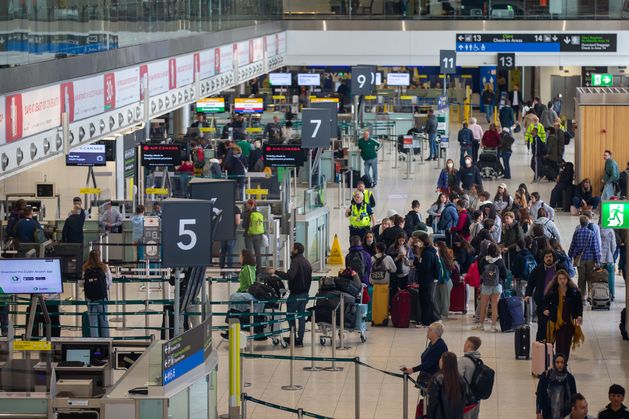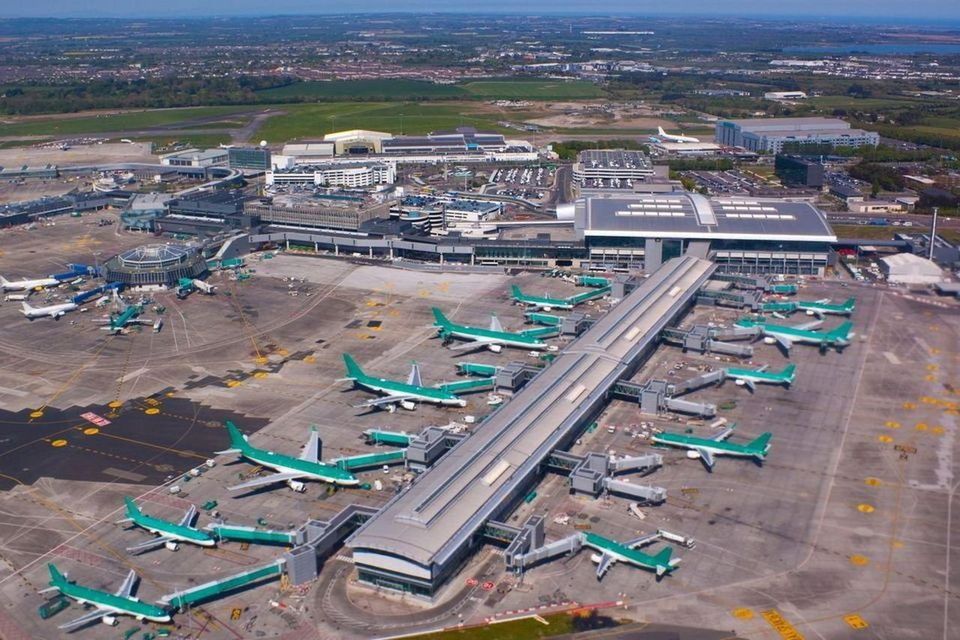Junior transport minister James Lawless to meet Ryanair’s Michael O’Leary and other aviation chiefs
“We’re now at a point of conflict between Irish and European law,” he said. “Compliance with one means breaking the other. We’re left holding the problem but not the solution.”
As the crisis over the airport intensifies, junior transport minister James Lawless is to meet Ryanair CEO Michael O’Leary and other aviation stakeholders in an effort to limit the impact of the passenger cap.
Airline chiefs want the cap scrapped, or at least hiked, to allow passenger numbers to keep up with demand and a rising population.
The cap limits the number of passengers that can use Dublin Airport to 32 million a year. It was introduced as a planning condition attached in 2007 to the construction of the second terminal at the gateway over fears nearby roads would become jammed.
The DAA said this week that it will breach the cap this year. It expects Dublin Airport will handle 33 million passengers during 2024.
DAA boss Kenny Jacobs. Photo: Gerry Mooney
“Naturally, the prospect of constraints on connectivity are a matter of concern for me in terms of its potential impact on the travelling public, business and tourism,” said the minister.
“I wish to reiterate that this Government is in favour of increasing the capacity of Dublin Airport, which is in line with the National Aviation Policy,” he added.
“In light of this I am undertaking a series of engagements with key stakeholders to seek to limit the impact of this constraint,” said Mr Lawless.
He is meeting Mr O’Leary next Wednesday, the day before the airline’s annual general meeting.
“This builds on meetings I have had with other key stakeholders including local residents, DAA, Cork Airport, Shannon Airport Group and business groups,” he added. “I will continue this work with further meetings with others, such as other airlines including Aer Lingus, tourism industry groups and regulators.”
He said his objective is to ensure connectivity to and from Ireland can continue to grow.
“ I believe this can be achieved in the short to medium term, through our other airports at Cork and Shannon which are ready and able to take more passengers,” insisted Mr Lawless.
He added: “I keenly await the decision of An Bord Pleanála in relation to Dublin Airport night flights, which has been under consideration since August 2022.”
That decision could be announced tomorrow.
The DAA said it would be ‘acting illegally’ if it tried to prevent people or flights from taking off at Dublin Airport
The DAA’s Kenny Jacobs told the Irish Independent today it was “simplistic” to compare the passenger cap with general planning laws. He insisted the DAA would be “acting illegally” if it tried to prevent people or flights from taking off.
The Irish Aviation Authority (IAA) oversees capacity allocation at Dublin Airport, with UK-based company Airport Coordination employed to be slot coordinator, deciding what slots airlines get after they apply for them.
The IAA has already told the DAA and airlines that it is cutting available slots this winter at Dublin Airport in an effort to ensure the passenger cap is adhered to.
But that has been challenged by Ryanair and Aer Lingus, which are arguing against the move. The DAA has also challenged the decision, but is arguing the opposite – that the cuts aren’t sufficient. That hearing is due to be heard on December 3.
The DAA is attempting to be seen to do everything it can to legally ensure it doesn’t breach the cap, despite that being the antithesis of what it actually wants to achieve, which is growth.
“We’ve run out of runway to comply with both Irish planning and EU slot regulations,” added Mr Jacobs. “We’ve done everything we can to dampen demand and have asked the High Court to review the IAA’s winter slot decision to avoid Dublin Airport exceeding the 32-million cap in 2024.”
It’s almost certain that if Dublin Airport officially confirms next year that it has breached the passenger cap, complaints will be made to Fingal County Council. The Council could issue an enforcement order against the DAA, which the airport operator would then likely oppose in court.
But Mr Jacobs said if that happens, the matter will almost certainly have to be decided by the European Court of Justice (ECJ).
“The conditions under Irish planning law require cuts to passenger numbers, while the airlines’ position would be that the level of cuts required are not permitted under EU law. The High Court is going to have to wrestle with this complex matter and I could see it going to Europe for clarity.”
Mr Jacobs said he is optimistic that if matters related to the passenger cap were referred to the ECJ, a decision could potentially be made within a matter of months.


